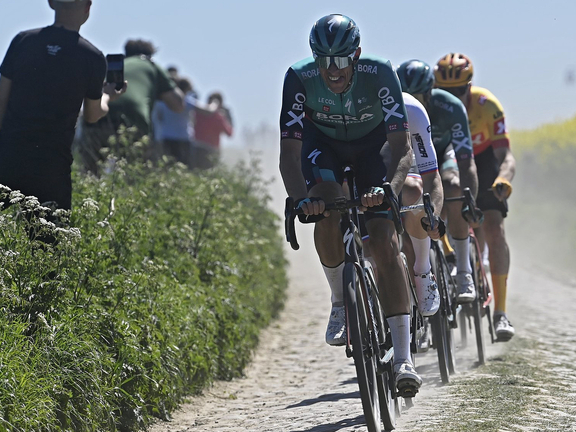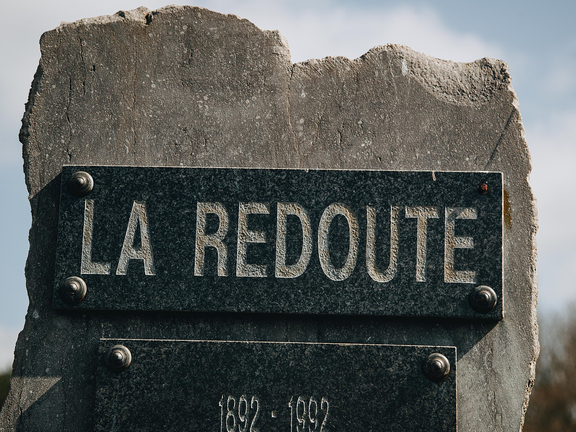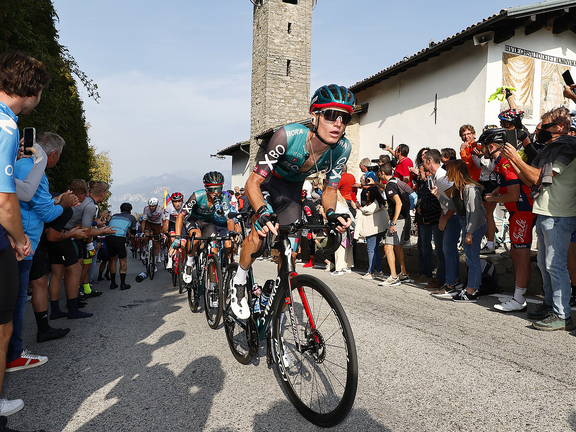

There’s more to the cycling calendar than just the three major national tours – the Giro d’Italia, the Tour de France and the Vuelta a España. Five monuments, the most important one-day cycling races, are also annual highlights for pros and fans.
In addition to the famous three-week Grand Tours – Giro d’Italia, Tour de France and Vuelta a España – the five “cycling monuments” also send cycling fans and professionals into raptures. While the major tours dominate the cycling calendar from May to September, one-day races such as the monuments are mainly held in spring and autumn.
The five monuments include Milan-Sanremo, the Tour of Flanders, Paris-Roubaix, Liège-Bastogne-Liège and Il Lombardia. Four of the races take place in spring, while Il Lombardia rounds off the road cycling season in October.
These races, which like other smaller one-day races are also known as classics or semi-classics, are characterised by their special tradition and long success stories.
The monuments of cycling are the five biggest races among the classics and, alongside the UCI Road World Championships, are among the most important one-day races. These events have a long tradition and their magic captivates cycling enthusiasts worldwide. For fans up-close, they are almost like being at a folk festival. The demanding routes which go past iconic points and the enthusiastic crowd by the side of the road make these races so special for everyone involved.
Milan-Sanremo - the start of the Monuments
The cycling elite gather in northern Italy to kick off the Monuments: Milan-Sanremo starts here. This year, the race will take place on 18 March. “La Primavera” (the spring), as this race is affectionately known, covers a distance of almost 300 km, making it the longest one-day race in professional cycling.

This year, for the first time, the riders won’t be starting directly in Milan, but in Abbiategrasso, a town near Milan located on the banks of the Ticino river. After 30 km, the riders will rejoin the original route, heading over the Turchino Pass to the Mediterranean coast before reaching the Ligurian spa report, San Remo.
The race is also known for two short yet challenging climbs, Cipressa and Poggio, towards the end of the route. These call for explosive attacks on the way up and daredevil manoeuvres on the way down. If none of the riders have broken away by this stage, the sprint turns into a showdown between all those who are still in the peloton after the chase over Cipressa and Poggio.
Tour of Flanders - the highlight of the Flemish cycling season
The next monument is not long in coming and will take place in Belgium on 2 April. As the highlight of the Flemish cycling season, the “Ronde van Vlaanderen” is a real treat for Belgian and international fans and a kind of national holiday for the locals.

“De Ronde” is known, amongst other things, for its special race dynamics. With its numerous cobbled sections and some short yet intensive climbs (known as “Hellinge”) it is essentially an elimination race: only the best riders can fight for the win here. The iconic sections are decorated with yellow flags featuring a lion – the Flemish flag.
The windy and rainy weather regularly creates special riding conditions. Climbs such as the Koppenberg, Paterberg or Oude Kwaremont captivate thousands of fans and reduce the number of riders to such an extent that by the time they reach the long home straight in Oudenaarde, where the winner is crowned, there are only a handful left, or sometimes just a lone rider.
Paris-Roubaix - the Queen of the Classics
Only one week later, on 9 April, the "Queen of the Classics" or "Hell of the North" - as Paris-Roubaix is often referred to - will take place in northern France. And there’s good reason for this nickname because the race (which was first held in 1896) covers around 250 km with numerous breakneck cobbled sections (“pavés”). These make up around 55 km of the total route and are much bumpier than the cobblestones we find in modern city centres.
The mostly historical and thus very rough sections of the route place high demands on riders and their equipment and often lead to spectacular falls or wheel damage.

The cobbled sectors are categorised according to their difficulty on a scale of one to five stars, with one being the easiest and five being the hardest. A five-star sector features cobbles that are sometimes loose or smooth, very uneven or with lots of gaps. This difficulty is compounded by the dirt and dust kicked up by the riders as they surge through the Hell of the North. So much so that by the time they finally cross the finish line in the Roubaix Velodrome they can barely recognise each other.
The April weather often plays a key role here, as the cobblestones can be a real slip hazard in bad weather. One of the best-known and hardest section is the “Trench of Arenberg” (“Trouée d’Arenberg”) which runs through Arenberg forest. The finale of this classic race begins with the highest difficulty level and crowds of spectators lining the edges of the seemingly endless straights. The winner is traditionally awarded a cobblestone trophy in Roubaix Velodrome.
Liège-Bastogne-Liège - the oldest monument
Just before the start of the Grand Tour season, the next cycling festival for Belgian fans will take place on 23 April. First run in 1892, Liège–Bastogne–Liège is the oldest of the monuments, hence its the nickname “La Doyenne” (“the oldest”).

In comparison with many other classics and monuments, this race is characterised by its hilly nature: the 258-km route contains as many metres of climbing as an average mountain stage of the Tour de France. The route leads from Liège through the Walloon Ardennes towards Bastogne and ends back in the city centre of Liège.
The most famous climb, the Côte de la Redoute, is known for separating the wheat from the chaff, before two more tough climbs follow shortly before the end. Afterwards, the riders continue downhill on wide roads until they reach the former industrial city of Liège.
Tour of Lombardy - the end of the cycling season
The Tour of Lombardy or "Il Lombardia" takes place on 7 October in northern Italy to mark the end of the cycling season. The “Race of the Falling Leaves” marks the end of the season for most riders. With just under 250 km and numerous climbs, the race is one of the most demanding monuments, and it shines through autumn landscapes between mountains and lakes with distinctive flair. Whereas the sprinters or the proven classics specialists take the lead at most of the spring monuments, the climbers have an extra advantage in this race.

The course is known for its steep inclines up to small mountain villages as well as the climb up to the Madonna del Ghisallo and Muro di Sormano cycling pilgrimage sites. Spurred on by the hot-blooded Tifosi (supporters), the riders make race-defining moves either there or in the narrow streets of the towns and cities in the last section of the route. Generally, only a handful of riders make it to the finish line at the same time, sprinting towards the last major win of a long cycling season. The finish of the Tour is not always in the same place, as the race alternates each year from Bergamo to Como or vice versa.